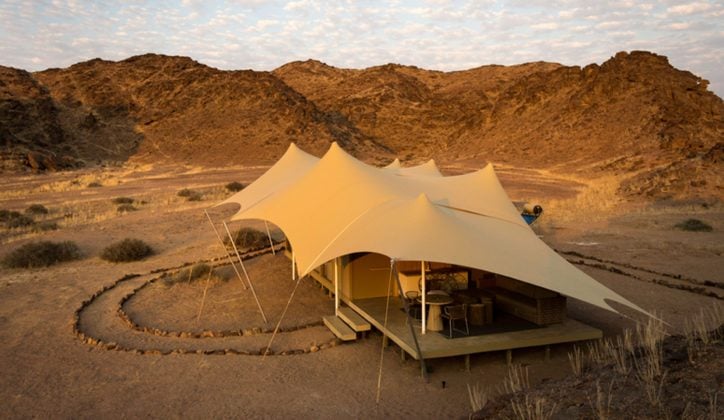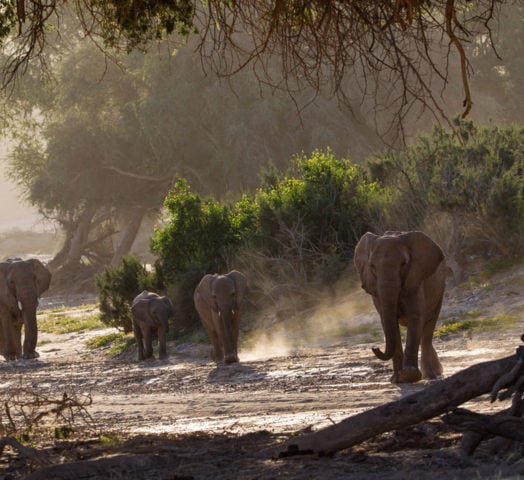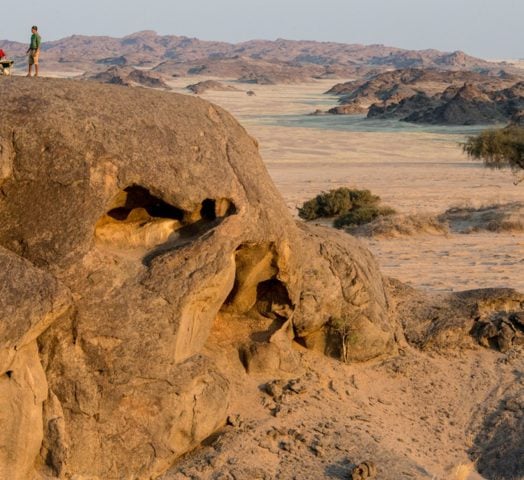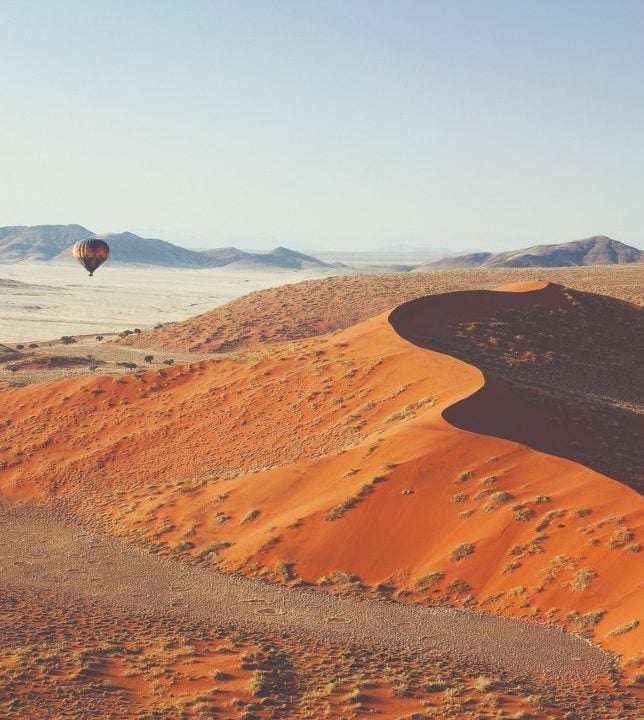One of earth's most desolate, dazzling coasts
Arguably Namibia’s most striking destination, the Skeleton Coast has earned its formidable name over the centuries for its treacherous currents, barren shores and inhospitable beauty. Today this region is an adventurer’s playground due to its remarkable landscape of shipwrecks, secret rivers, shifting sand dunes, mesmerising canyons and its well concealed life.
Embark on thrilling game drives to find the elusive desert-adapted elephant, or race across the floodplains and the dune fields to spot enormous Cape fur seals lazing on the sand. The terrain changes the further north you go, as does its inaccessibility. For about 250 kilometres north of Swakopmund to the Torra Bay the scene is mostly gravel plains and rocky desert.
What is not widely known about this area is that its various sand rivers, such as the Omaruru, Ugab, Huab and Koichab, create oases and water beds. These support the fascinating desert ecosystems, wildlife and even the Himba people, who have survived off these green inland rivers for centuries.
The Skeleton Coast is also home to a plethora of bird life, with experiences available to spot brown snake eagles and brightly-coloured flamingos feeding at the oases.
Highlights
Spot desert elephants, jackals or the more seldom seen brown hyena and giraffe on game drives
Visit Cape Cross Seal Reserve where you can observe vast colonies of Cape fur seals
Spot the rich birdlife including sanderlings, larks, brown snake eagles, falcons and flamingoes

Emily Wallington
Travel Designer









The Skeleton Coast is an absolutely stunning location in Namibia. The half-submerged shipwrecks are eerily beautiful. Here you can also spot a vast array of wildlife, from desert elephants to zebras and lions. If you're lucky you may even catch a glimpse of a cheetah!

Emily Wallington
Travel Designer
Luxury accommodation in the Skeleton Coast
Why choose Jacada for your luxury safari experience?

Safari expertise
Our experts bring decades of first-hand expertise. They’ve lived and travelled across Africa and are regularly on the ground reviewing the most exclusive camps and experiences. You’ll also have the support of a personal concierge, based in region.

Unforgettable guides
We handpick the most knowledgeable guides, who bring each destination to life with care and passion. They’re chosen for their ability to provide unrivalled insight into the region’s wildlife and landscapes as well as a genuine, memorable experience.

Positive impact
By travelling with us, you directly support a range of initiatives spanning wildlife conservation to community engagement. Our luxury trips are designed to prioritise experiences that are positive for you and the places you visit.
Trip inspiration
Where to go
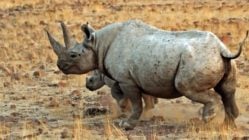
Damaraland
Damaraland is home to the open-air gallery of Twyfelfontein. Here, you will find thousands of ancient engravings made by the indigenous San people – making this UNESCO World Heritage Site a must-see in Namibia.
Discover more
Etosha National Park
Known as the 'Place of Mirages', Etosha National Park's incredible landscapes range from vast savannahs to silver salt pans. Keep an eye out for herds of blue wildebeest and desert elephants.
Discover more
Kaokoland
This is one of Namibia’s most remote and inaccessible areas. In Kaokoland, you can meet the Himba and learn about their traditional lifestyle on a cultural safari. In the region, you can also spot desert elephants, giraffes and black rhinos.
Discover more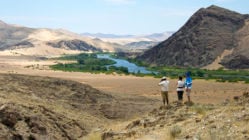
Kunene River
Flowing from Angola into Namibia, the Kunene River is the only perennial water source in the entire region. From here, embark on nature drives and boating excursions in search of Nile crocodiles. You can also venture further and explore remote mountains, river valleys and waterfalls.
Discover more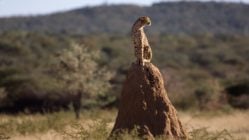
Okonjima Nature Reserve
Enjoy unrivalled game viewing experiences at Okonjima Nature Reserve. It is arguably one of the best places to spot predators in Namibia. Head out on exhilarating game drives and nature trails to track Big Cats that have been rehabilitated by the AfriCat foundation.
Discover more
Sossusvlei
With some of the most surreal landscapes on the planet, Sossusvlei is known for its rust-coloured ridges of sand and mosaics of cracked clay soil. It is located in the Namib-Naukluft National Park and is one of the oldest and driest ecosystems on the planet. Visit during the months of October to April to see the desert transform with bright desert flowers blanketing the dunes.
Discover more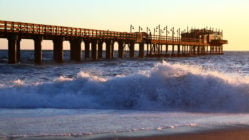
Swakopmund and Walvis Bay
These two towns are located between the Namib Desert and Skeleton Coast and are the ideal base to explore the natural wonders of the region. Adventure sports are some of the best things to do in Swakopmund and Walvis Bay. Skydiving, dune boarding, quad biking and scenic balloon flights are some of the many incredible experiences waiting for you.
Discover more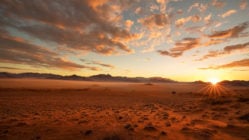
The NamibRand Reserve
As one of the largest private reserves in Southern Africa, the NamibRand Reserve aims to help protect and conserve the unique ecology and wildlife of the south-west Namib Desert. Its vast vistas make for some incredible sunset views. The NamibRand Reserve also lies in one of the darkest regions on earth, making it one of the best places to go stargazing.
Discover more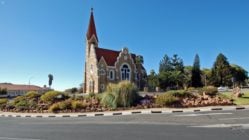
Windhoek
Namibia’s vibrant capital city, Windhoek is an interesting gateway to the rest of the country. The city is dotted with fascinating buildings that look like they belong in northern Europe. This is due to a legacy of German colonialism. Take a walking city tour to learn more about its dynamic history and rich culture.
Discover moreMeet your Africa team
When to visit
While ideal all year round, stable weather conditions and mild temperatures make October to March the best time to visit the Skeleton Coast. During these warmer months, you can expect clear skies and little rainfall. This time of year brings warmer evenings than during the winter months of July to September.

Sunny days
From October to March

See the birth of seal pups on the coast
From October to November

Birdwatching
From November to February
Plan your trip to the Skeleton Coast
Whatever you want from your adventure in the Skeleton Coast, our team of expert travel designers are ready to help.
The trip was amazing ! Jody did a great job Of organizing everything and went over and above for making my big birthday special! Will recommend Jody and macadamia to everyone planning a trip to Namibia!
Our experience was top notch from start to finish!! The travel, camps, food, excursions, guides, accommodations, and hosts all deserve 5 stars. All of our exceptions of the trip were blown out of the water. We not only loved seeing Namibia, but we learned so much along the way. Our guides at every camp were truly ambassadors for their country…
Jacada provided impeccable customer service for our trip to Namibia for our ten year anniversary. Our amazing trip designer Jacob Maahs was super brilliant in the itinerary he created for us, and he pulled it off at the very last minute (we are bad planners). He was a true pleasure to work with and I would trust him with any…
Jacada is beyond incredible and we look forward to planning future adventures with them. Our experience was flawless from beginning to end. Iain listened to our dream trip ideas and came up with a bucket list itinerary to Namibia, Zambia, Zimbabwe, and Botswana. James took over and guided us with his amazing care til departure. Such peace during our travels…
We have traveled extensively with many companies, just came back from Namibia and South Africa Jacada's services, concierge, and personalization of our travel plans was flawless. The specifics and attention to detail was incredible from arrival to the airports assisting through customs and immigration,chartered flights, wilderness lodges, local touring and guides was spectacular. We appreciate the entire team , and…
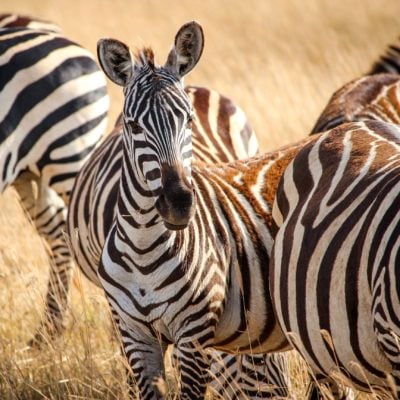
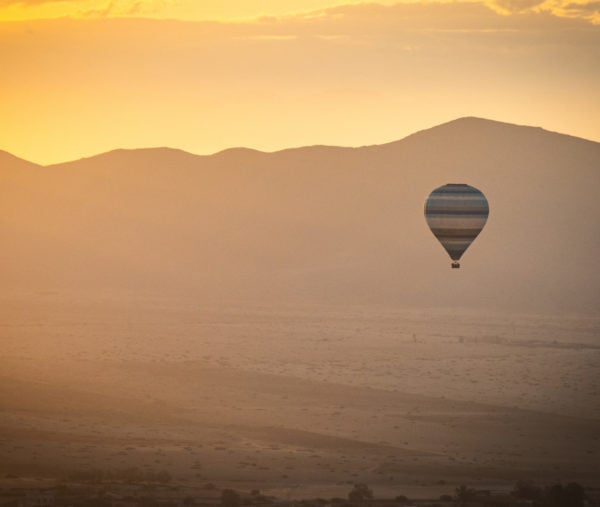
Plan with peace of mind
When you book a trip in today’s world there’s a lot to think about. But with the right advice and expert planning, you can do it with confidence.
If you book to travel with us but your plans are impacted by circumstances you can’t control, we’ll change your reservation or cancel your booking for a full credit towards future travel.




